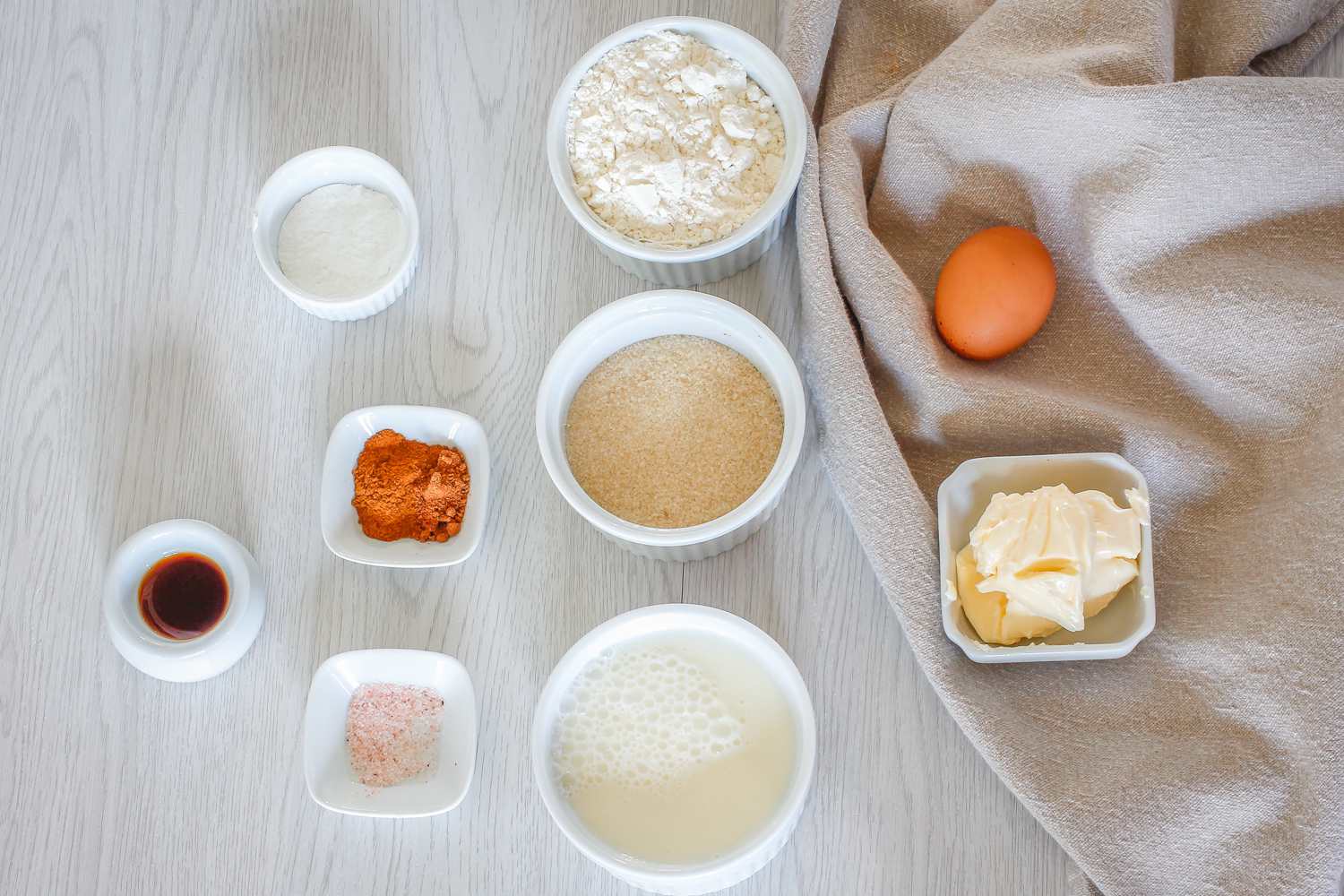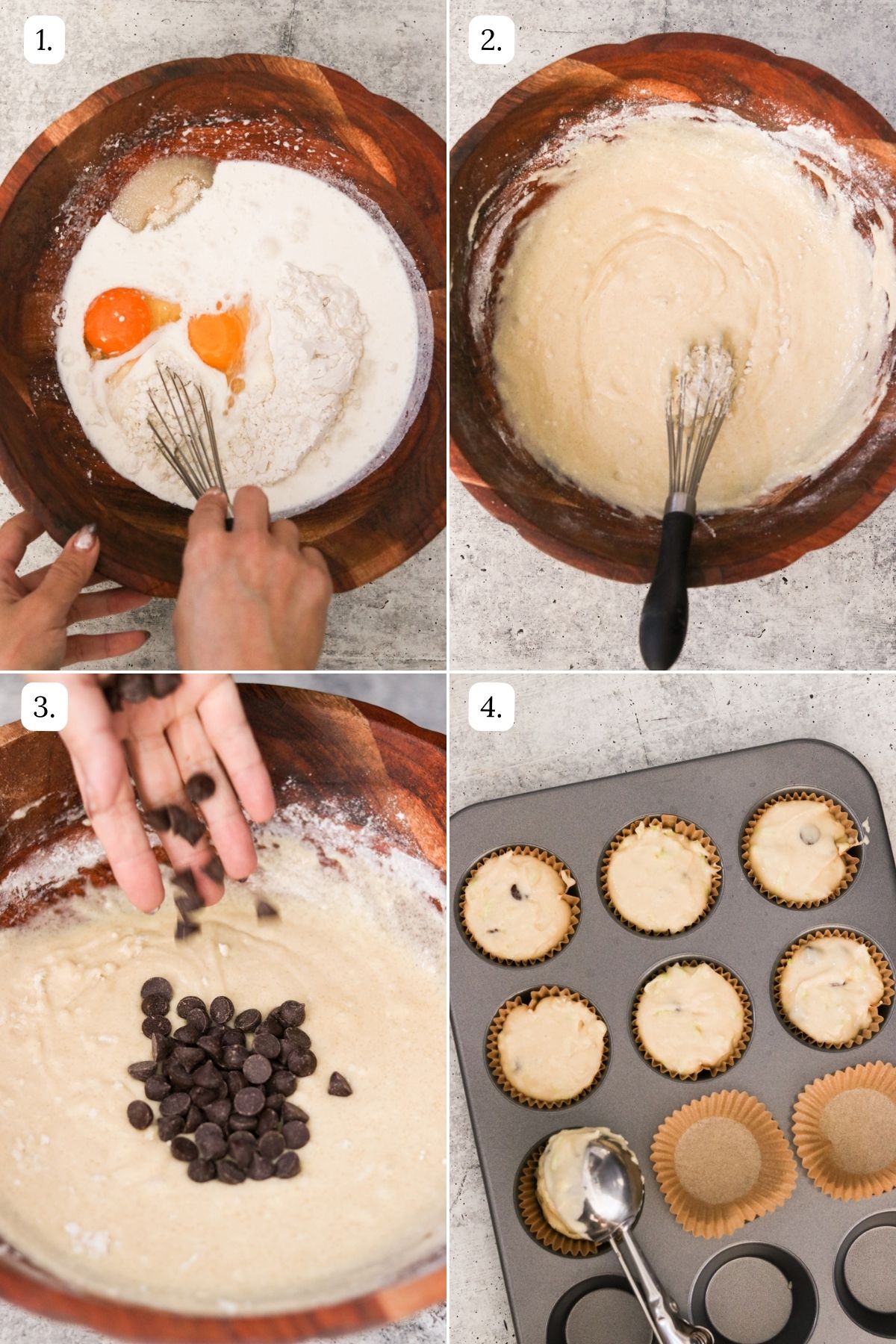Japanese baking has a unique charm, and Japanese muffins are no exception. Known for their fluffy, light texture and distinct flavors, Japanese muffins bring a delightful twist to traditional Western-style muffins. With popular flavors like matcha and red bean, these treats make for a perfect breakfast, snack, or dessert. This guide will show you everything you need to know to make Japanese muffins at home, from choosing the right ingredients to step-by-step instructions. Let’s dive into this flavorful journey!
What Makes Japanese Muffins Different?

Unlike traditional American muffins, which often have a dense and hearty texture, Japanese muffins are known for being soft, airy, and light. Their texture is closer to a delicate sponge cake than a traditional muffin, thanks to Japanese baking techniques and specific ingredients that enhance the overall fluffiness.
Japanese muffins are usually flavored with ingredients unique to Japanese cuisine, like matcha (green tea powder), red bean paste (adzuki beans), or even mochi flour. These ingredients bring a traditional Japanese flavor profile that’s both earthy and subtly sweet, offering a unique culinary experience.
Essential Ingredients for Japanese Muffins

Creating the perfect Japanese muffins begins with understanding the key ingredients that make these treats special. Here’s a breakdown of the essential ingredients for authentic Japanese-style muffins.
Matcha (Green Tea Powder)
Matcha, a finely ground green tea powder, is a staple in Japanese desserts and adds a vibrant green color and earthy flavor to baked goods. Matcha powder is also known for its health benefits, as it contains antioxidants and a moderate amount of caffeine. When using matcha in muffins, start with a small amount to prevent overpowering the sweetness, and adjust based on your taste preference.
Red Bean Paste (Adzuki Beans)
Red bean paste, or “anko,” is a sweet paste made from adzuki beans. It has a mild sweetness and slightly nutty flavor, which complements the soft texture of Japanese muffins. You can buy ready-made red bean paste or make it at home by cooking and mashing adzuki beans with sugar. This ingredient is commonly layered or swirled into the muffin batter for an authentic Japanese taste.
Mochiko Flour (Sweet Rice Flour)
Mochiko flour, or sweet rice flour, is what gives certain Japanese baked goods a slightly chewy texture. Incorporating a small amount of mochiko in your muffin batter can add a subtle chewiness, similar to mochi. Mochiko is especially popular in recipes for Japanese mochi muffins.
Japanese Milk and Dairy
Japanese milk is known for its richness and slightly sweet flavor, making it ideal for creating the soft, fluffy texture of Japanese muffins. If you can’t find Japanese milk, you can substitute it with whole milk or Hokkaido milk if available.
Step-by-Step Guide to Making Japanese Muffins

Get ready to bake some light, fluffy Japanese muffins that are full of unique flavors. Here’s a comprehensive guide to help you make these delightful treats right in your kitchen.
Step 1 – Preparing the Ingredients
Preparation is key to a smooth baking process. Start by gathering and measuring all your ingredients to make each step easier and ensure consistency in your muffins.
Slice Fresh Ingredients: If you plan to add fresh fruit like strawberries, or a bit of citrus zest such as yuzu, slice or zest these in advance. Set them aside so they’re ready when needed.
Prepare Matcha or Red Bean Paste: If you’re adding matcha powder, sift it to remove any lumps, ensuring a smooth batter and an even green color. For red bean paste, prepare small dollops so it can easily be swirled into the batter during assembly.
Step 2 – Mixing the Batter
Creating a fluffy, soft muffin texture requires careful handling of the batter. Avoid overmixing to keep the batter airy and light.
Whip the Eggs and Sugar: In a large mixing bowl, beat the eggs and sugar together until the mixture is light, pale, and frothy. Whipping the eggs and sugar introduces air, which will give your muffins a soft, cloud-like texture.
Add Milk and Oil: Next, gently mix in the milk and oil. Stir carefully, just until everything is well combined. Avoid overmixing, as it can deflate the batter and make the muffins dense.
Incorporate Flour and Flavorings: Gradually sift in the flour, mochiko (if you’re adding it for extra chewiness), and any additional flavorings, like matcha powder. Use a spatula to gently fold these ingredients into the batter. The goal here is to keep the mixture light and airy, which will help create that soft, tender muffin crumb.
Step 3 – Adding Japanese Flavors
This is where you can customize your muffins with Japanese-inspired flavors like matcha and red bean paste, making them uniquely delicious.
Swirl in Red Bean Paste: If you’re making red bean muffins, drop small spoonfuls of red bean paste into the batter and use a spoon or skewer to swirl it gently. This will create beautiful red bean ribbons in the muffins, adding a touch of sweetness in every bite.
Incorporate Matcha Powder: For matcha-flavored muffins, mix a bit of sifted matcha powder into a portion of the batter. You can swirl this matcha-infused batter with the plain batter for a marbled effect, or mix it thoroughly for a consistent green color that highlights the earthy matcha flavor.
Step 4 – Baking the Muffins to Perfection
Now it’s time to bake! Japanese muffins require just the right baking temperature and time to achieve that perfect, fluffy texture.
Fill the Muffin Tins: Line your muffin tin with paper liners or lightly grease the wells. Fill each liner about three-quarters full, leaving room for the muffins to rise without overflowing.
Bake in a Preheated Oven: Preheat your oven to 350°F (175°C). Place the muffin tin in the oven and bake for 20-25 minutes. Check for doneness by inserting a toothpick into the center of a muffin – if it comes out clean, they’re ready!
Check for Doneness: The tops of the muffins should be lightly golden, and the muffins should bounce back when gently pressed. This springiness is a good indicator that your muffins are perfectly baked.
Step 5 – Cooling and Serving
Allow your muffins to cool properly to enhance their flavor and prevent any sogginess.
Cool on a Wire Rack: Once out of the oven, transfer the muffins to a wire rack to cool completely. This step helps to prevent moisture from gathering in the liners, which could make the muffins soggy.
Serve and Enjoy: These muffins are best enjoyed fresh and warm. Serve them with a cup of green tea for an authentic Japanese-inspired treat, or with coffee for a fusion of flavors.
Tips and Tricks for Perfect Japanese Muffins

To make sure your Japanese muffins turn out beautifully, keep these tips in mind:
Choose the Right Ingredients: Using high-quality matcha powder and real Japanese red bean paste can make a big difference in flavor. Opt for fresh ingredients and high-quality milk to ensure the best results.
Adjust the Sweetness: Japanese desserts are often less sweet than Western desserts. Start with a lower amount of sugar, especially if using sweetened red bean paste or condensed milk, and adjust to taste.
Chill the Batter (Optional): Some bakers find that chilling the batter for 30 minutes before baking helps create a more uniform, fluffy texture.
Use Room-Temperature Ingredients: Using room-temperature eggs and milk helps them incorporate more easily into the batter, resulting in a smooth, even texture.
Serving Suggestions for Japanese Muffins
Japanese muffins are versatile and can be served for various occasions. Here are some serving suggestions:
Breakfast or Snack: Enjoy Japanese muffins with a cup of tea or coffee. Matcha muffins pair especially well with green tea, while red bean muffins are delightful with a light roast coffee.
Dessert Presentation: Dress up your Japanese muffins with a dusting of matcha powder or powdered sugar for an elegant dessert presentation. For special occasions, drizzle with a bit of white chocolate or serve with a dollop of whipped cream.
Gift or Party Treat: Japanese muffins are a unique and thoughtful gift idea. Wrap them individually and add a touch of Japanese-inspired packaging to impress your friends and family.
FAQ
1. What makes Japanese muffins different from regular muffins?
Japanese muffins are lighter and fluffier, with unique ingredients like matcha and red bean paste that give them a distinct flavor and texture.
2. Can I make Japanese muffins without special ingredients like matcha?
Yes, you can make simple Japanese muffins using only basic ingredients. Matcha and red bean paste add authenticity but are optional.
3. How do I store Japanese muffins to keep them fresh?
Store muffins in an airtight container at room temperature for 1-2 days, or refrigerate them for up to a week. Reheat in the microwave for a fresh-out-of-the-oven taste.
4. What’s the best way to serve Japanese muffins?
They are delicious served with tea or coffee as a breakfast item, snack, or dessert. Try dusting matcha powder or powdered sugar on top for added flavor.
5. Are there any gluten-free versions of Japanese muffins?
Yes, mochi muffins made with mochiko (sweet rice flour) are naturally gluten-free, as they use rice flour instead of wheat flour.
Conclusion
Japanese muffins are a delightful way to bring a taste of Japan into your kitchen. With flavors like matcha, red bean, and mochi, they offer a unique twist on the classic muffin, making them ideal for breakfast, snacks, or even as a beautiful dessert. Whether you’re a fan of Japanese cuisine or simply looking to try something new, these muffins are sure to impress. So, gather your ingredients and give this Japanese muffins recipe a try – your taste buds will thank you!
